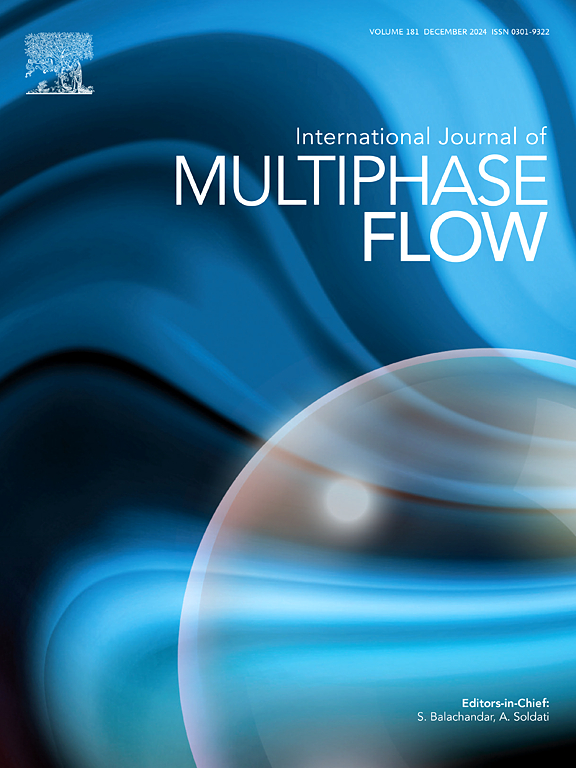Effects of orifice height and gas flow rate on underwater bubbles dynamics in crossflow
IF 3.6
2区 工程技术
Q1 MECHANICS
International Journal of Multiphase Flow
Pub Date : 2025-01-04
DOI:10.1016/j.ijmultiphaseflow.2025.105127
引用次数: 0
Abstract
This study employs high-speed photography and image processing to investigate the effects of orifice heights ( = 0, 0.5, and 2, where represents the boundary layer thickness) and gas flow rates (Qg = 0.5, 2, and 10 L/min) on bubble dynamics in crossflow. Results indicate that higher gas flow rates extend bubble formation time, enlarge the bubble diameter, increase the terminal rising velocity, and reduce the trajectory inclination angle. Additionally, greater orifice height accelerates liquid flow at the orifice. This acceleration leads to earlier bubble detachment, which reduces the bubble diameter, increases the trajectory inclination angle, and lowers the terminal rising velocity. Furthermore, a mathematical model was developed to comprehensively describe the entire process of bubble formation and rising, accurately predicting kinematic parameters such as bubble velocities and the forces acting on the bubble. In the formation stage, the model agrees well with experimental data (error ∼ 10%), identifying buoyancy and mass-related inertial force as the dominant detachment force in rising and streamwise direction, respectively. In the rising stage, the model incorporates a terminal velocity correction to account for the impact of preceding bubbles, significantly enhancing accuracy (error < 7%). It identifies , suction from preceding bubbles , and drag as the key factors affecting the rising velocity. Meanwhile, forces in the streamwise direction are minimal as the terminal streamwise velocity approaches the incoming flow velocity. These findings significantly enhance our understanding of bubble dynamics under crossflow, providing valuable insights for optimizing industrial processes involving gas-liquid interactions.

求助全文
约1分钟内获得全文
求助全文
来源期刊
CiteScore
7.30
自引率
10.50%
发文量
244
审稿时长
4 months
期刊介绍:
The International Journal of Multiphase Flow publishes analytical, numerical and experimental articles of lasting interest. The scope of the journal includes all aspects of mass, momentum and energy exchange phenomena among different phases such as occur in disperse flows, gas–liquid and liquid–liquid flows, flows in porous media, boiling, granular flows and others.
The journal publishes full papers, brief communications and conference announcements.

 求助内容:
求助内容: 应助结果提醒方式:
应助结果提醒方式:


